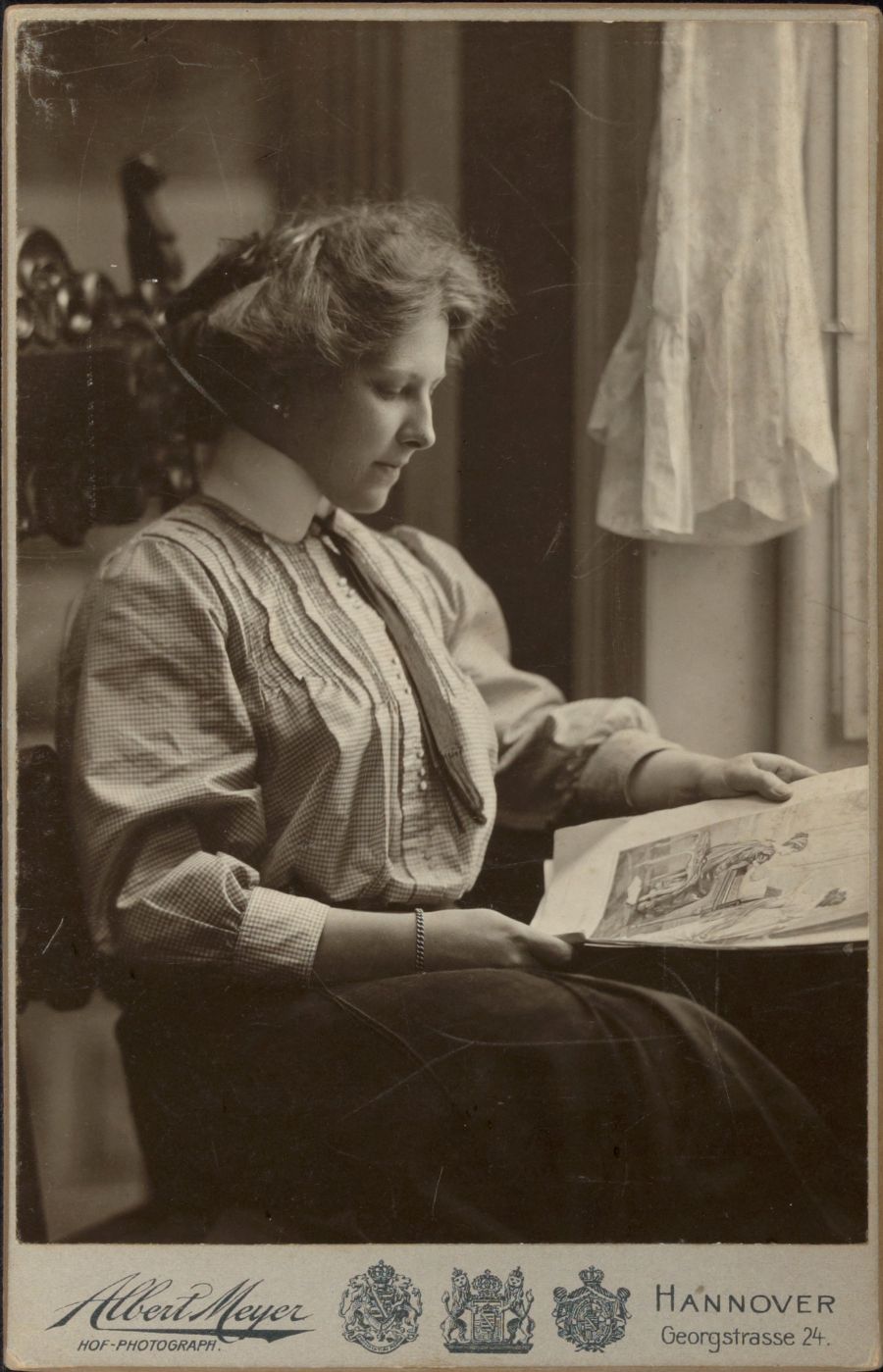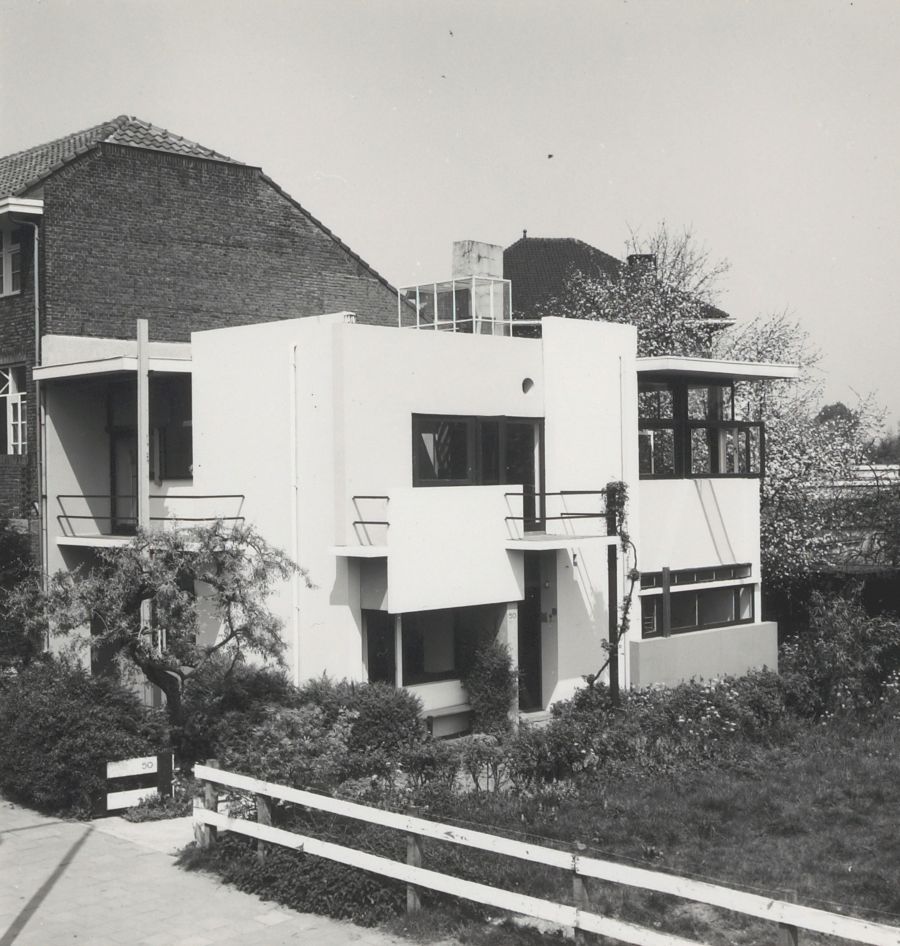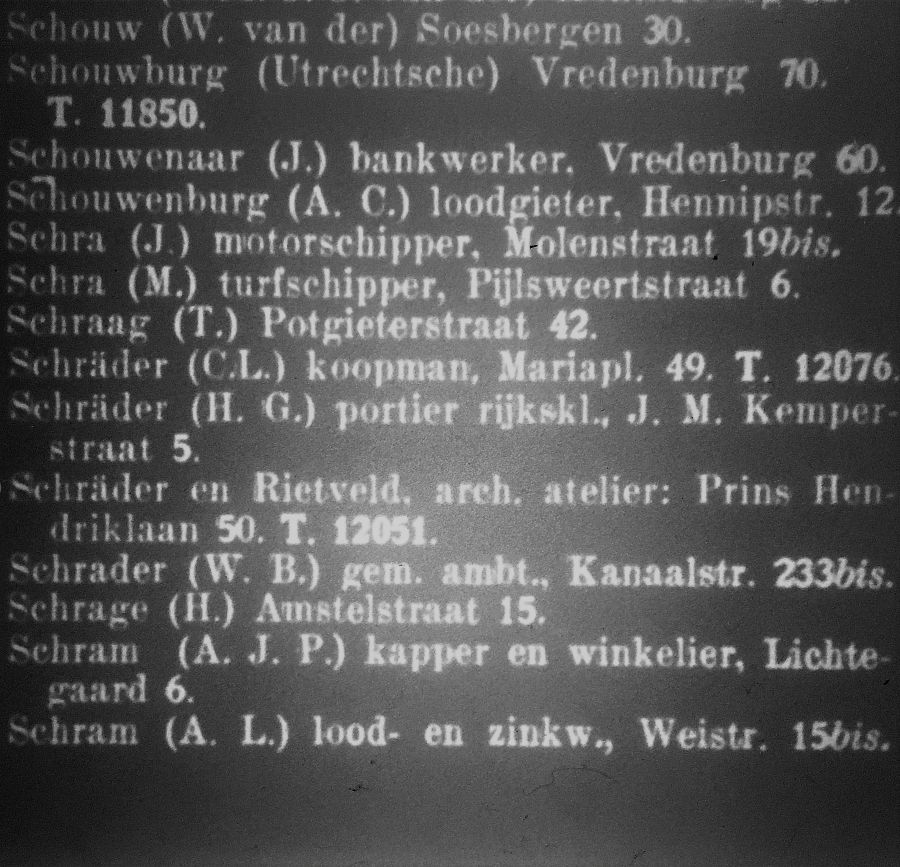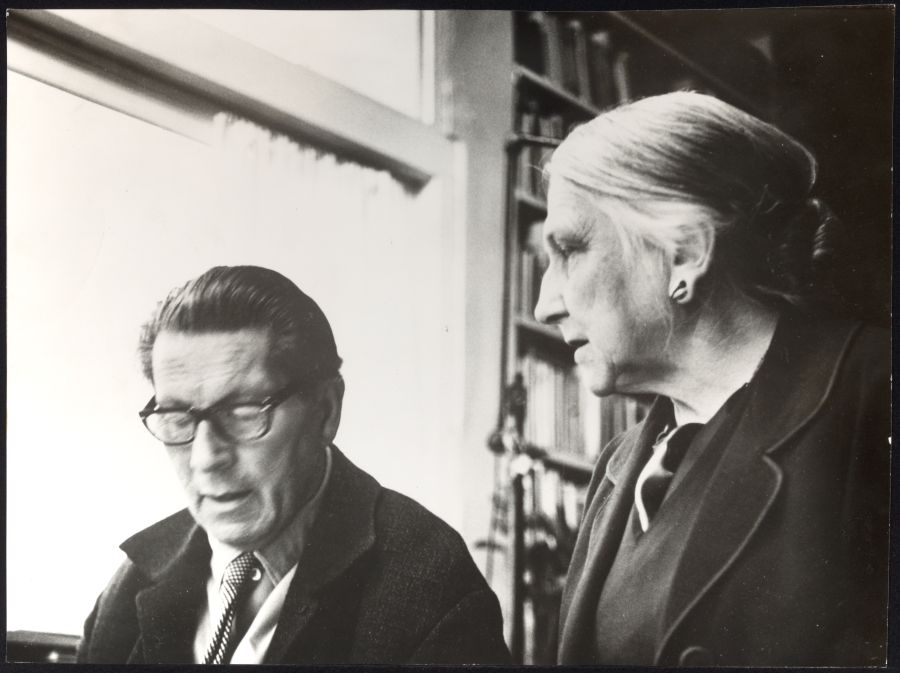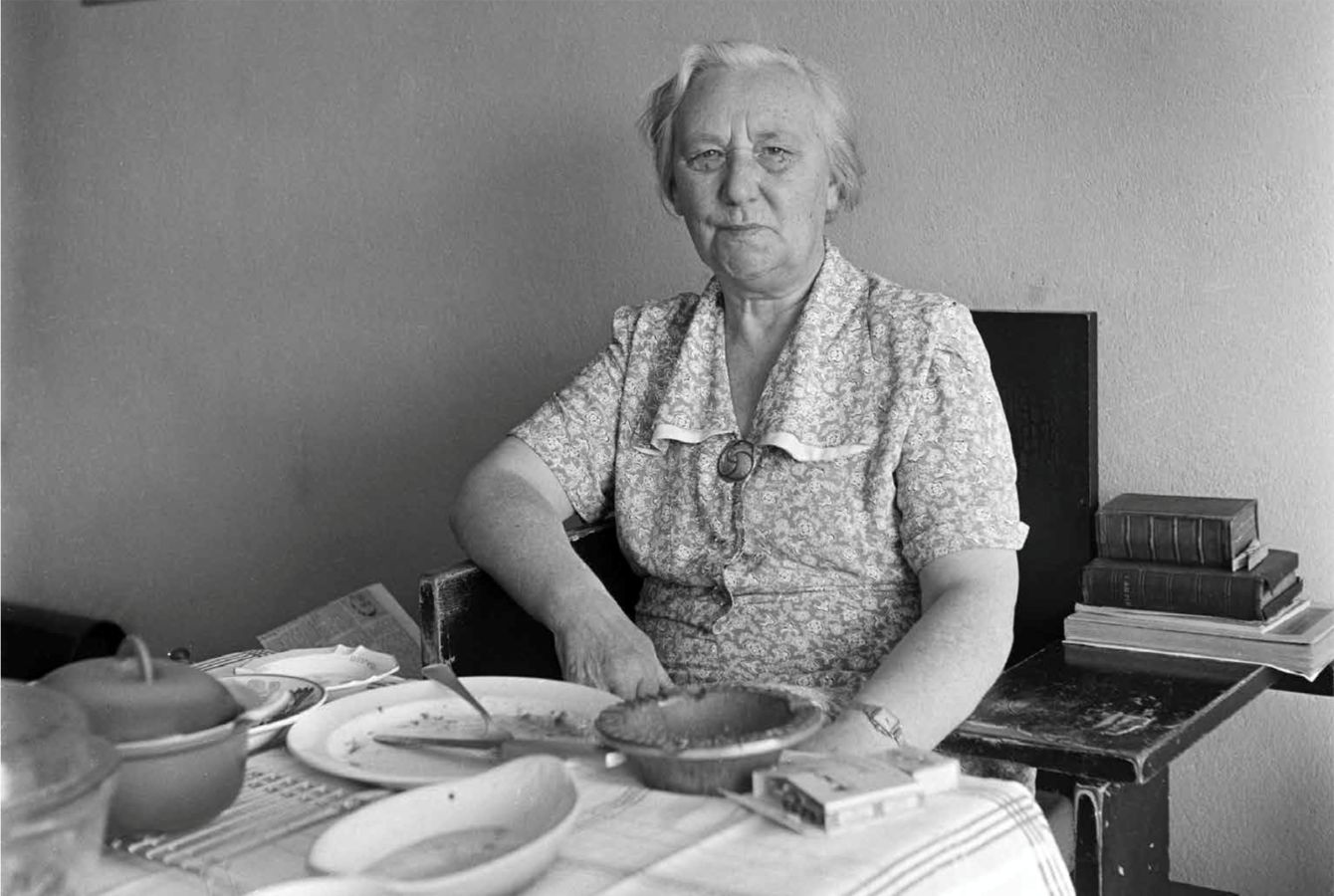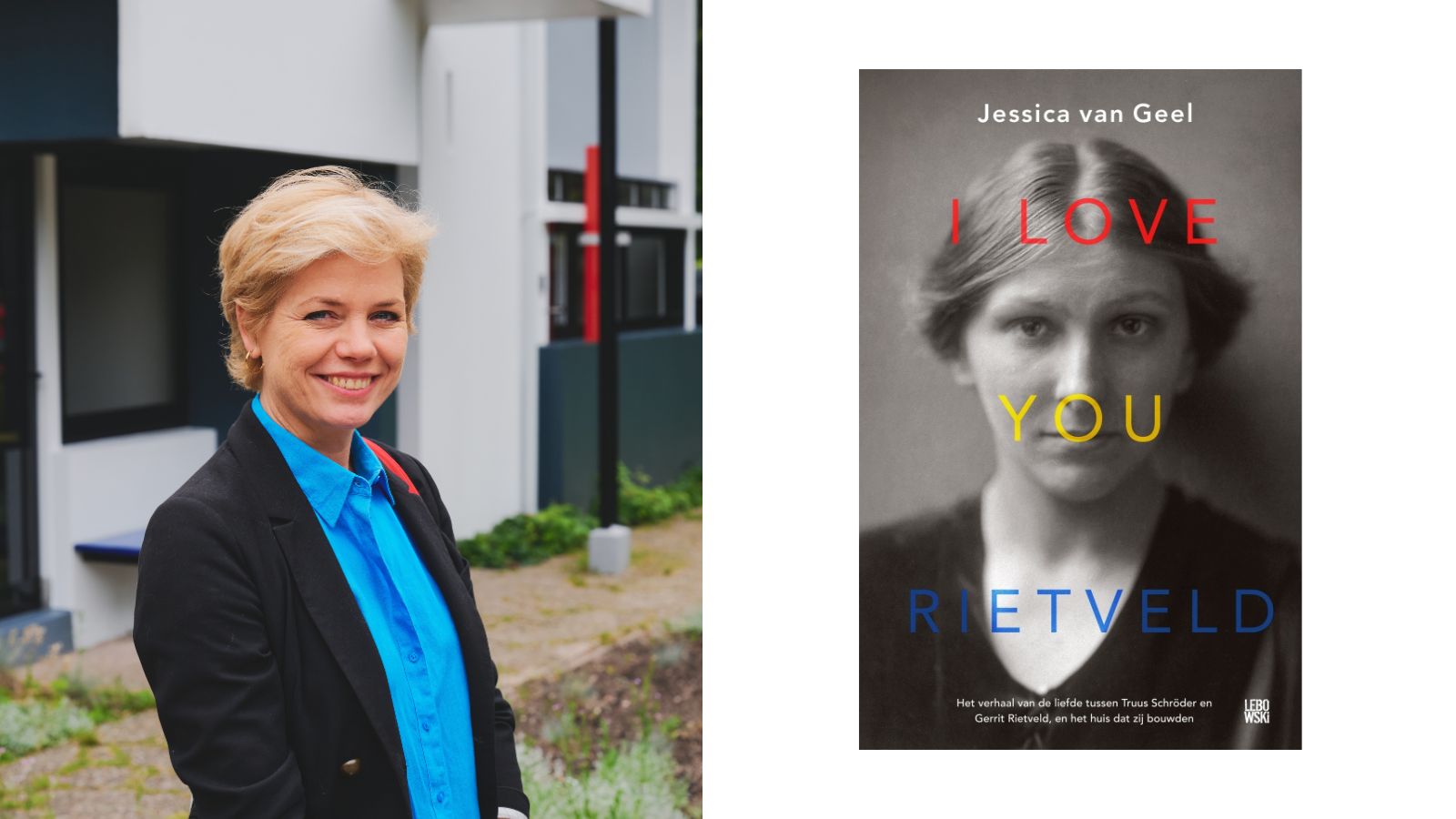Truus Schröder
Client and co-designer of the Rietveld Schröder House, and lover of Gerrit Rietveld.
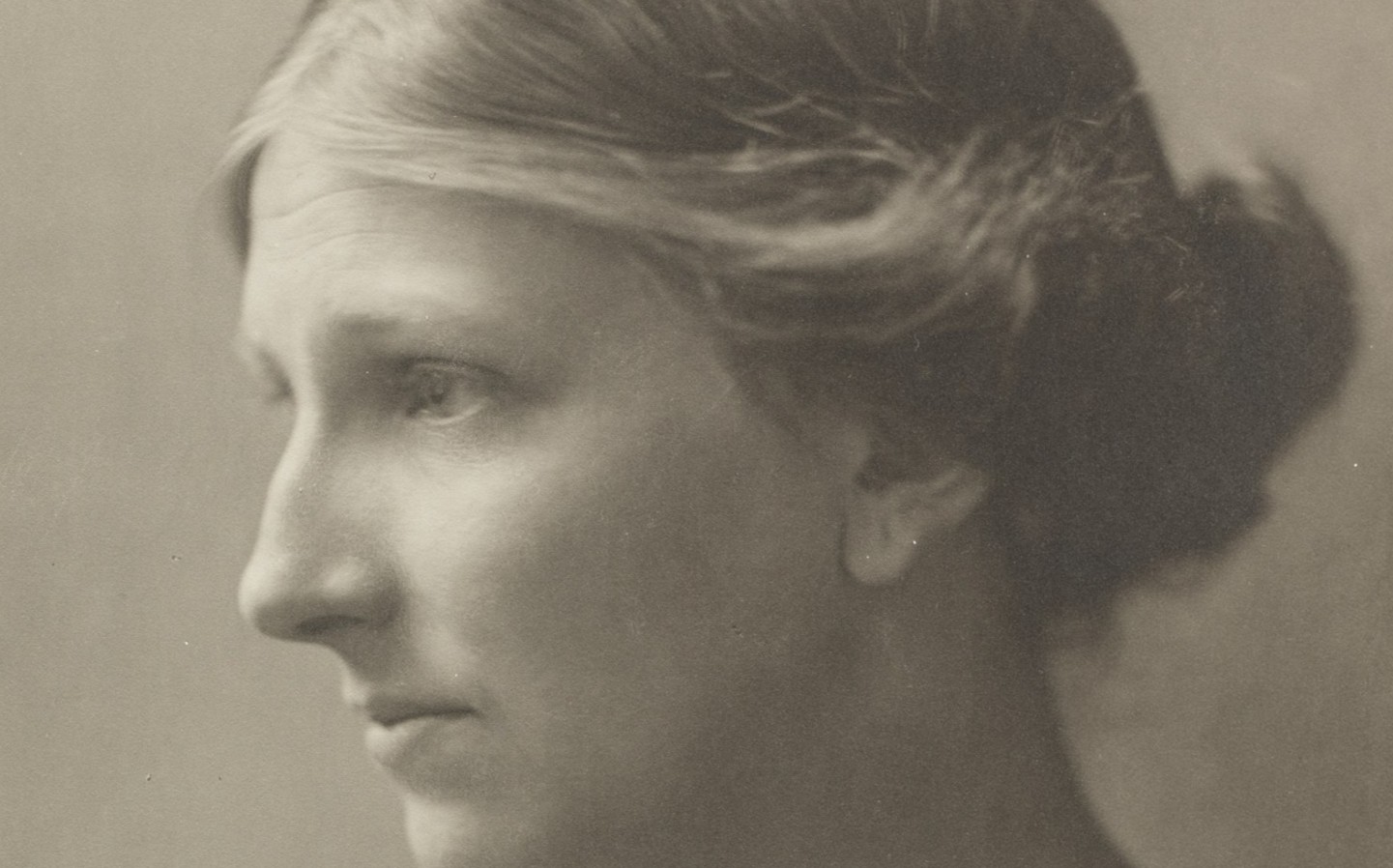

Truus Schröder. I love you, Rietveld
Truus Schröder was more than client and co-designer of the Rietveld Schröder House. She was also Gerrit Rietveld's lover for more than forty years. She stimulated his talent and played a vital role as his artistic conscience.
From one of Truus Schröder's notes, 1947
Rietveld said: “You throw ideas around you. They say I have a lot of ideas, you have a lot more. I'll take care of them at your place. Not just ideas, you know where to go.”

In her neoclassical home on the Biltstraat in Utrecht, Truus Schröder met Gerrit Rietveld. The young Gerrit came to deliver a desk that he had made in his father's furniture workshop. That was in 1911. Incidentally, the same year in which they both got married. However, they didn't marry each other.
From that meeting onwards, they kept in touch.
Truus Schröder
Raised in a wealthy Catholic family, Truus Schröder studied in London and Hanover for a few months. Her father was a textile wholesaler.
In 1911, Truus married a lawyer from the southern region of the Netherlands (Brabant) Frits Schröder. He was the son of her father's business contact.
From a young age, Truus was drawn to modern ideas. She admired architects like Berlage and sought a life beyond convention. When she married Frits, he promised her freedom: she would be able to study and pursue a career. He also claimed he didn’t want children. But after having three children, one son and two daughters, Truus reflected on this marriage as follows: “He had promised me everything, but lived up to nothing. Ultimately, he trapped me.”
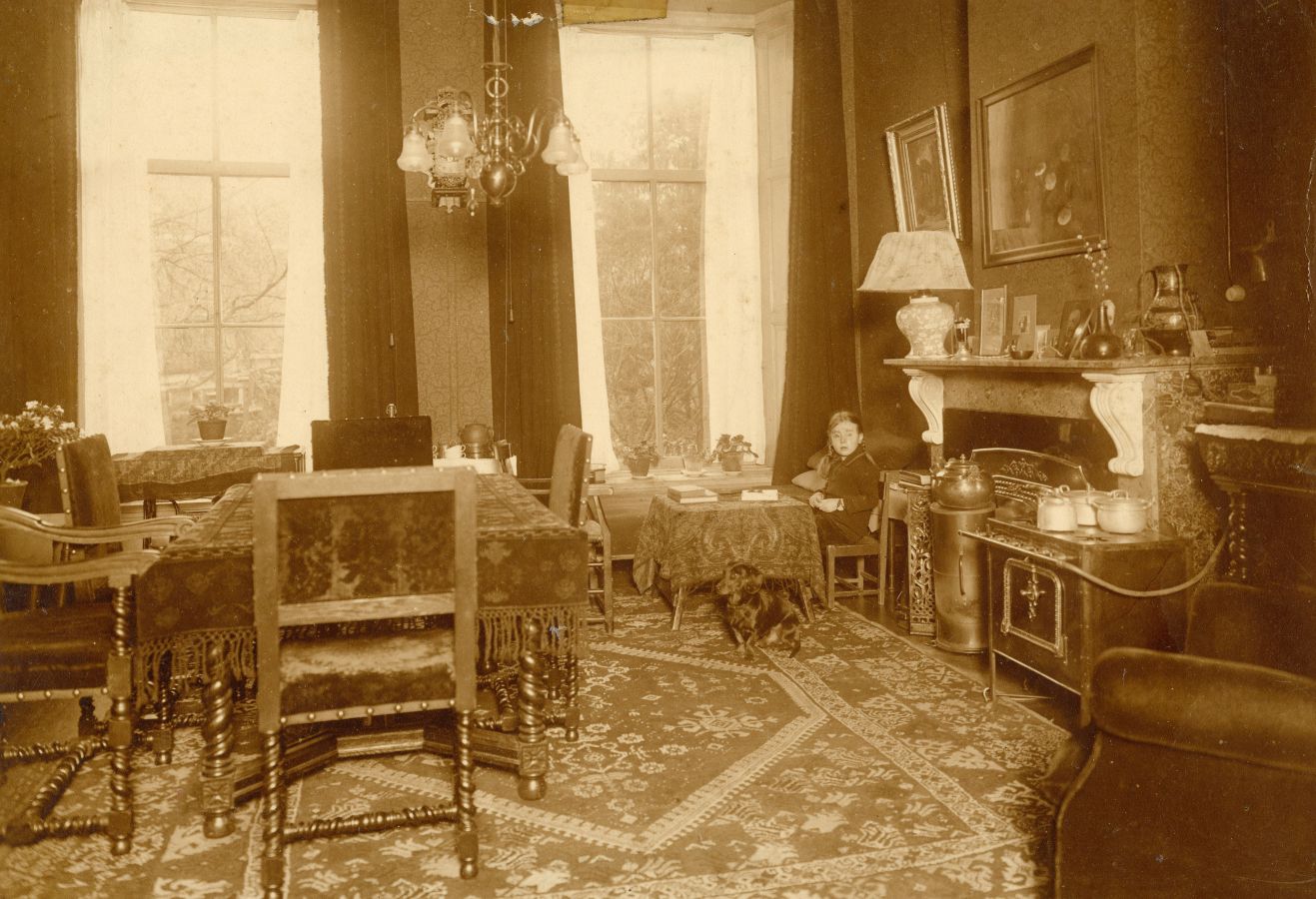
The Han Schröder Architectural Collection, Ms1987-064, Special collections, Virginia Tech, Blacksburg, Va.
This is how classically decorated the former residence of Truus Schröder and her husband at the Biltstraat was.
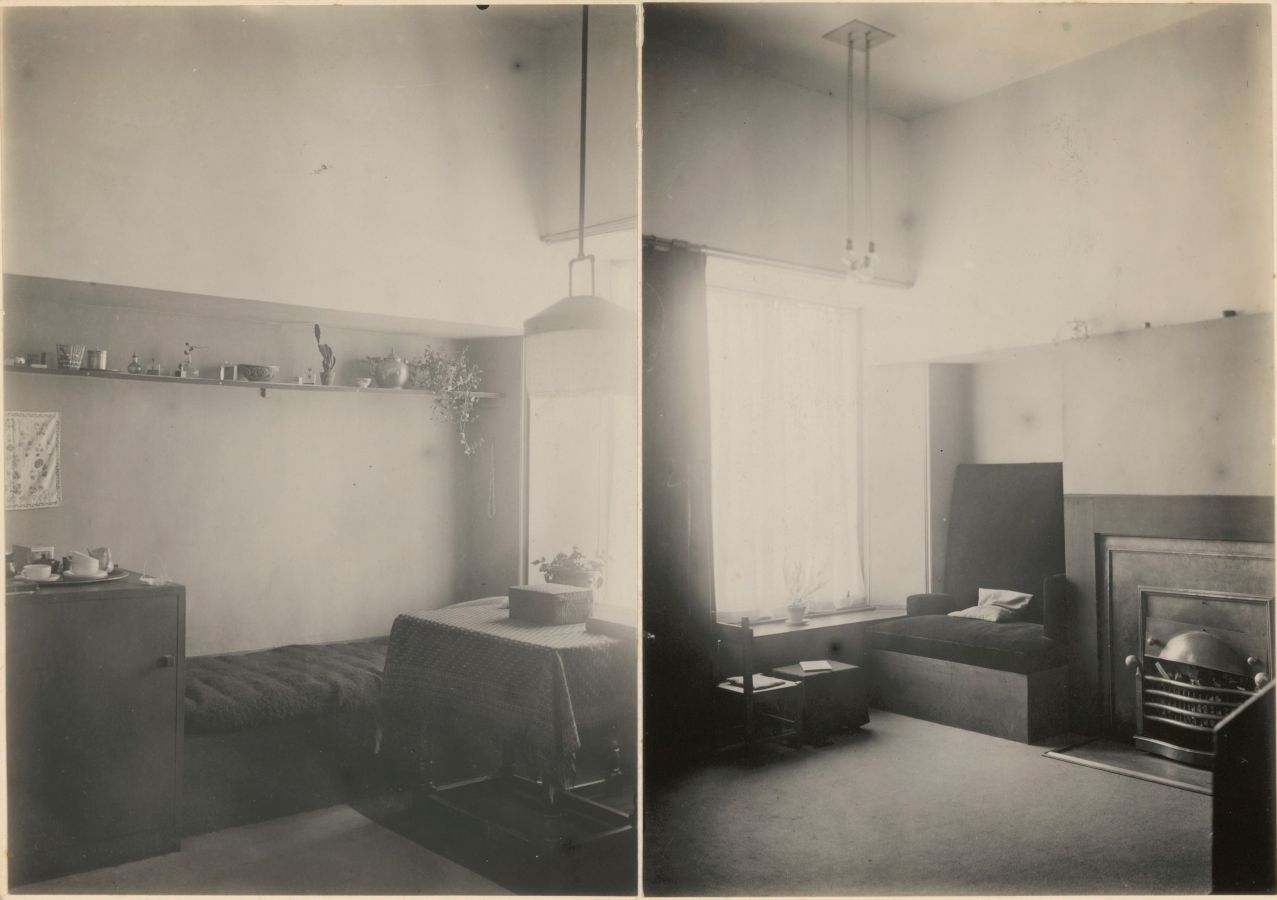
In 1921, Gerrit Rietveld renovated a room at this residence for Truus Schröder. She lovingly called it her “room with the pretty greys”.
Truus Schröder
“Rietveld gave me the medicine that would allow me to dare to live. What your senses experience should be valued highly. Be elementary. It's not the quantity that matters, but the quality. I was ripe for it and hungry. I missed so much.”
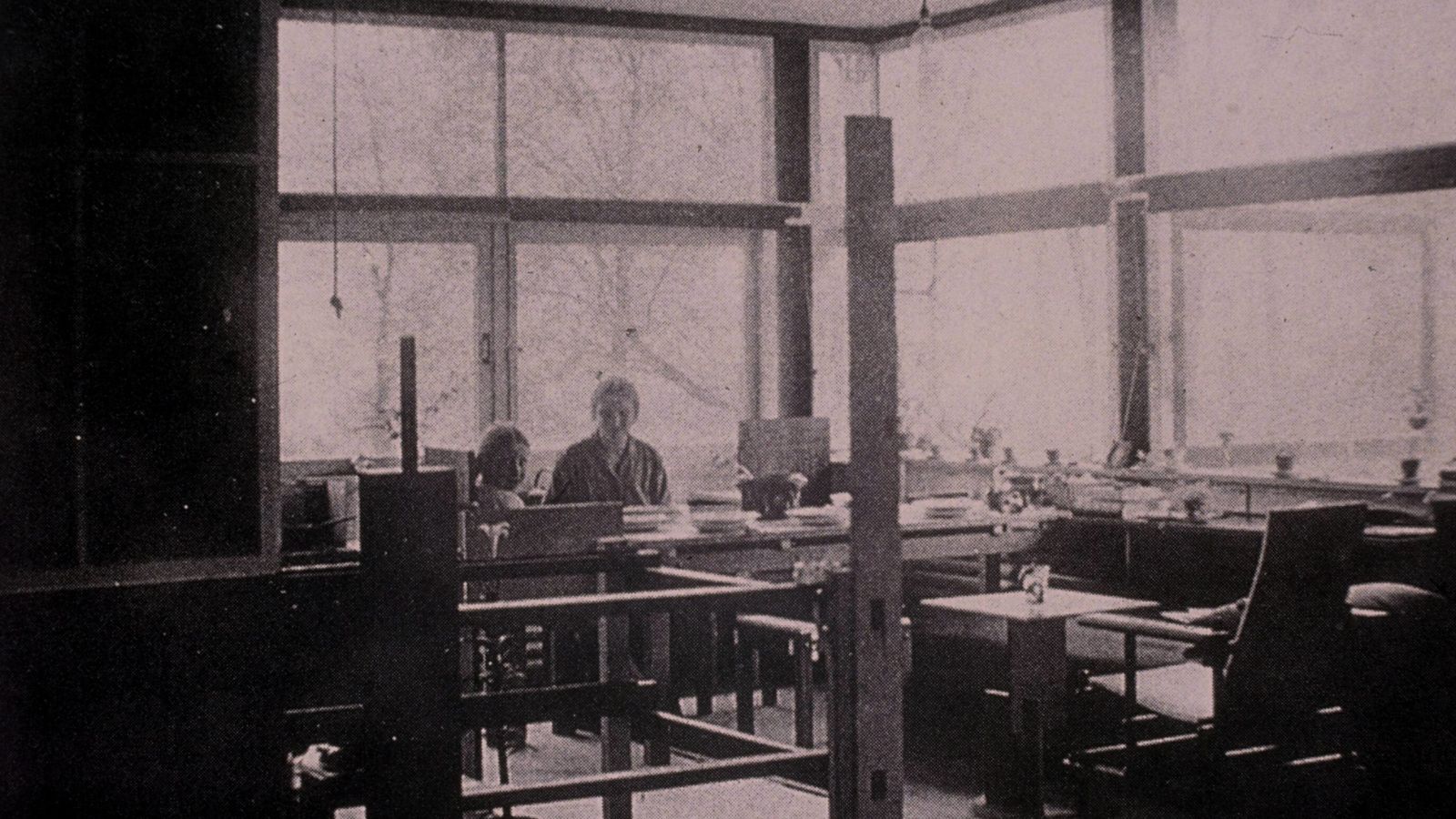
Truus Schröder and her youngest daughter Han Schröder on the first floor of the Rietveld Schröder House, around 1925.
It wasn't just a home. Gerrit and Truus established their joint architectural office on the ground floor.
Schräder and Rietveld Architects: That's how they were listed in the phone book. (Schräder was Truus' maiden name.)
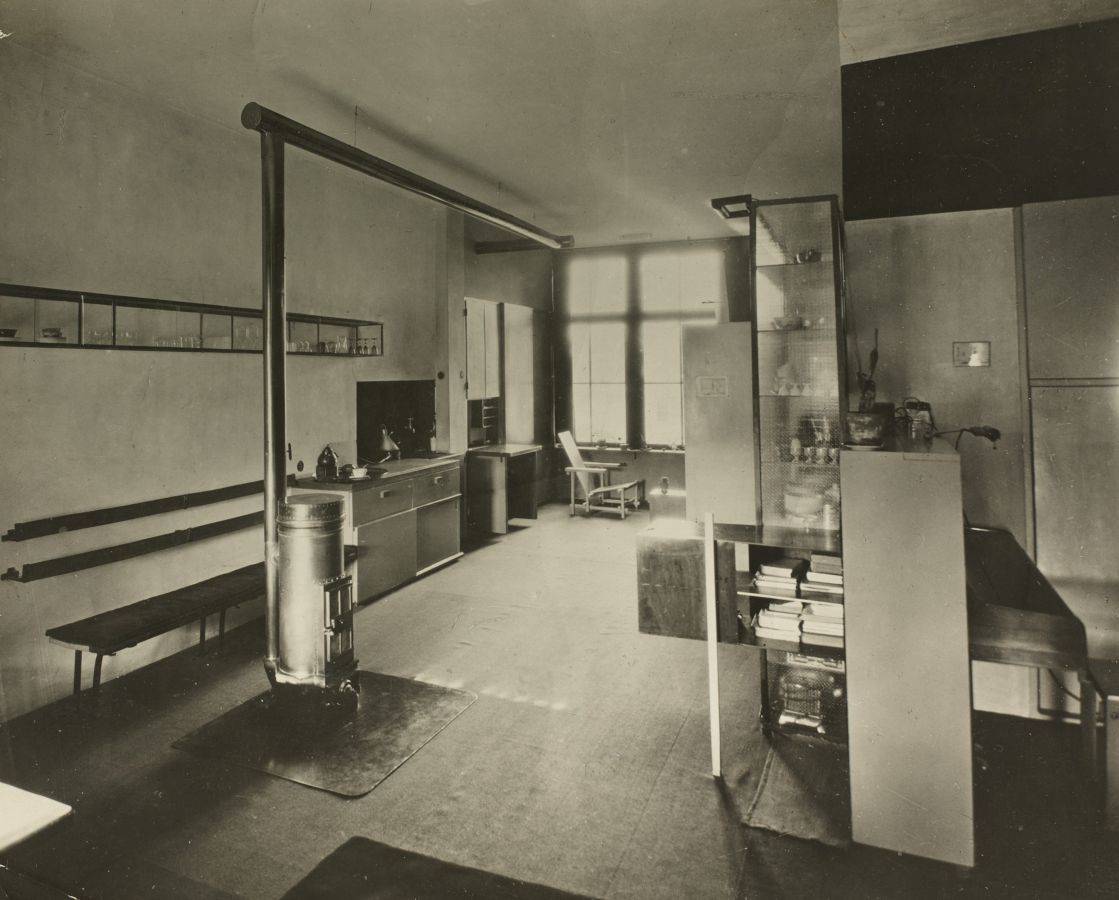
Gerrit Rietveld and Truus Schröder drew many interiors together. Including the living room of her sister and brother-in-law: An and Rein Harrenstein who lived at the Weteringschans in Amsterdam.
I.L.Y.R.
Well into his old age, Gerrit Rietveld continued to write letters, postcards, and brief notes to Truus Schröder, often signing off with the abbreviation I.L.Y.R. - I Love You, Rietveld, or a variation of it.
One message read tenderly:
"You can't answer me, but I still ask: Are you all right? Just whisper 'yes' from afar. Tonight, I'm searching for the moon. Goodbye, darling. I.L.Y.R."
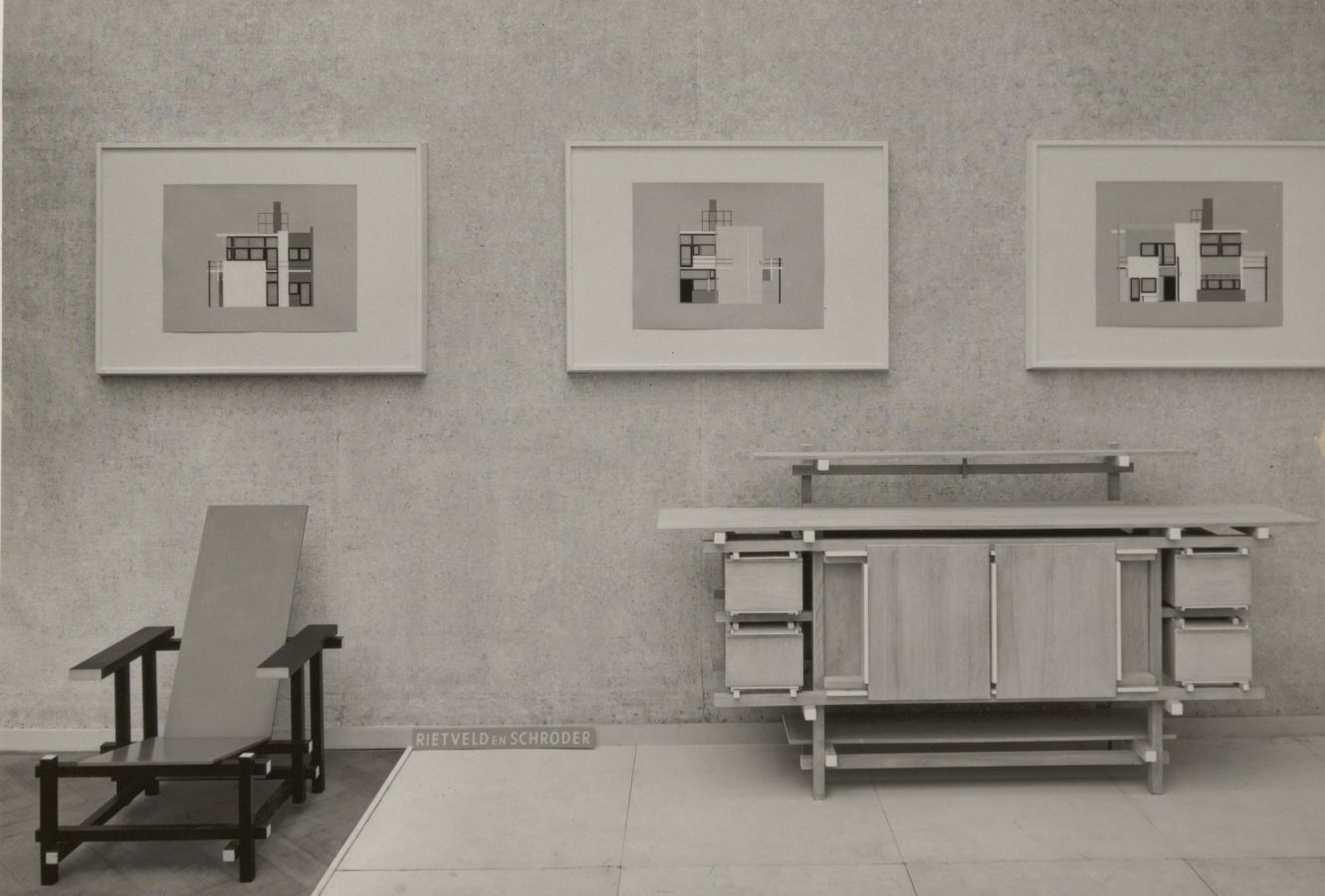
At the 1951 Stijl exhibition at the Amsterdam Stedelijk Museum — as proof of their cooperation — the works were accompanied by the sign “Rietveld and Schröder”.
Meanwhile, Gerrit Rietveld remained married to his wife Vrouwgien, with whom he had six children. She was an orthodox religious woman who had been a nurse before her marriage. The Bible was almost always within her reach. This is also the case in this photo, on the wide armrest of the Berlin chair, designed by Rietveld.
After the passing of Vrouwgien in 1957, Gerrit moved in with Truus in the Rietveld Schröder House on Prins Hendriklaan. They were 68 and 67 years old when they were finally able to live together.
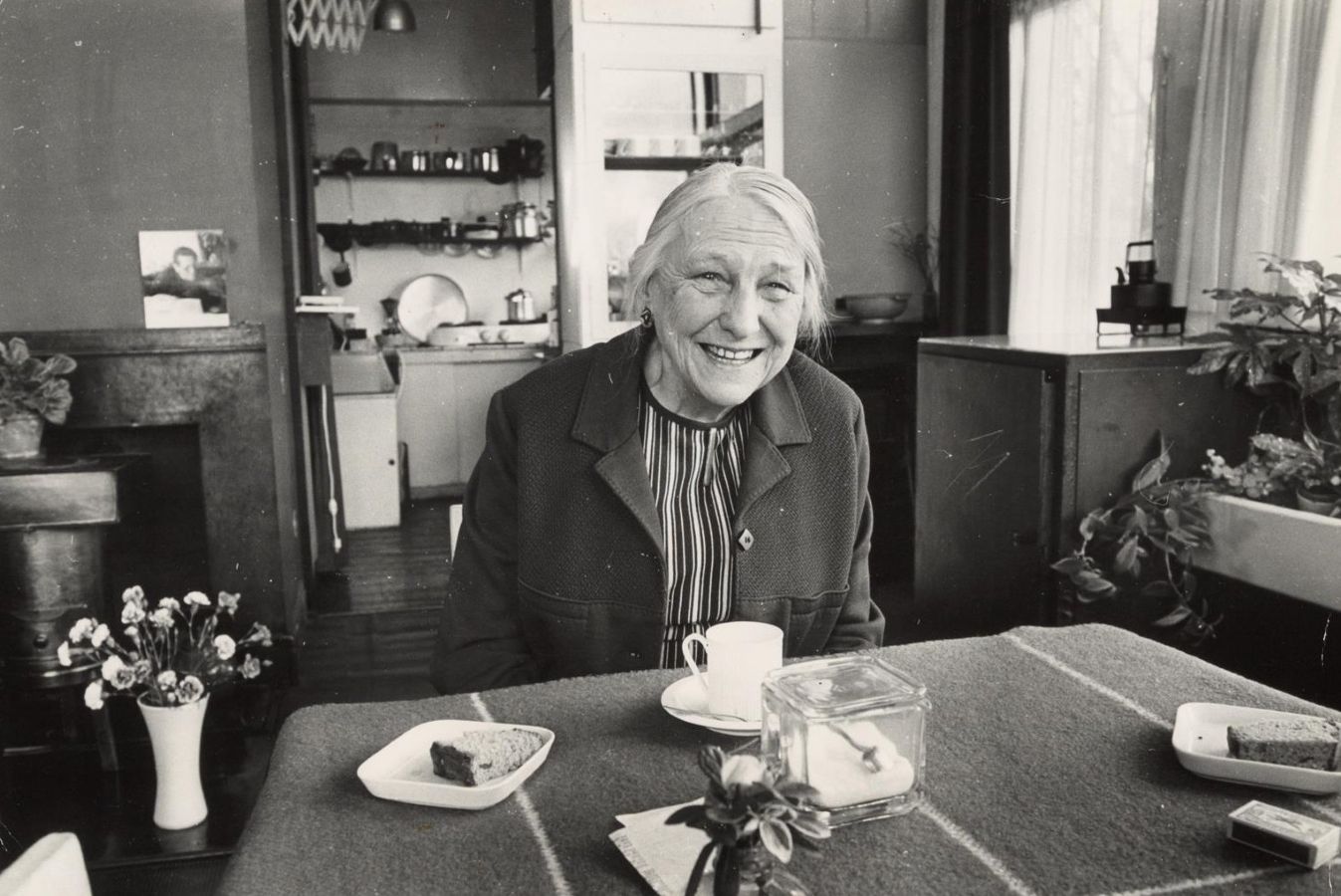
After Gerrit Rietveld passed away in 1964, Truus Schröder compiled his archive. It was her life's work.
Gerrit Rietveld in a note to Truus Schröder (undated):
“The message we had to bring together was the simplicity of life, through work and example. I don't think we did it too fanatically.”

Truus Schröder died in 1985 and was buried next to Gerrit Rietveld in Den en Rust cemetery in Bilthoven. Years later, Gerrit Rietveld would be reburied by his children in Utrecht. According to some, to bring him back to 'his' Utrecht. Others said it was mainly to take Rietveld away from his “mistress”.
I love you, Rietveld
The book I love you, Rietveld by Jessica van Geel tells the story of the (secret) love between Gerrit Rietveld and Truus Schröder, based on extensive research, interviews and the family's personal documents. About love, family ties, the development of a great talent and, with the birth of De Stijl and Dada, also a striking time frame of an exciting period at the beginning of the last century. I love you, Rietveld is of course also for sale in the Rietveld Schröder House.



